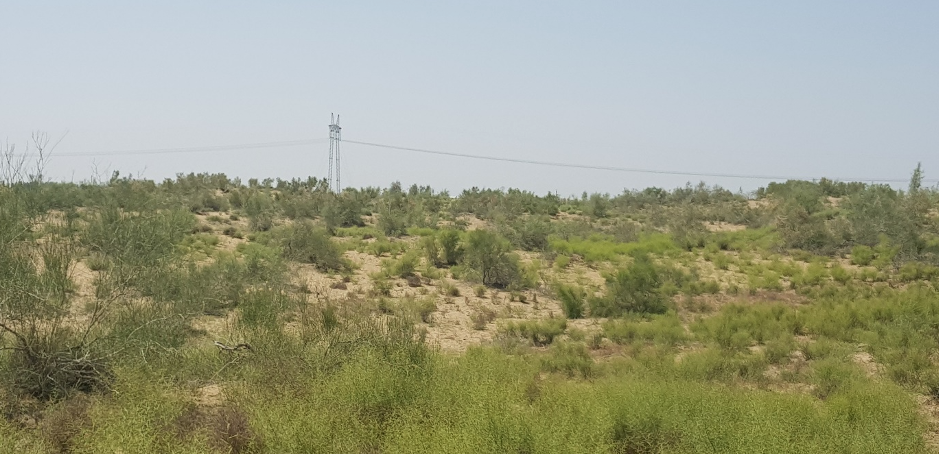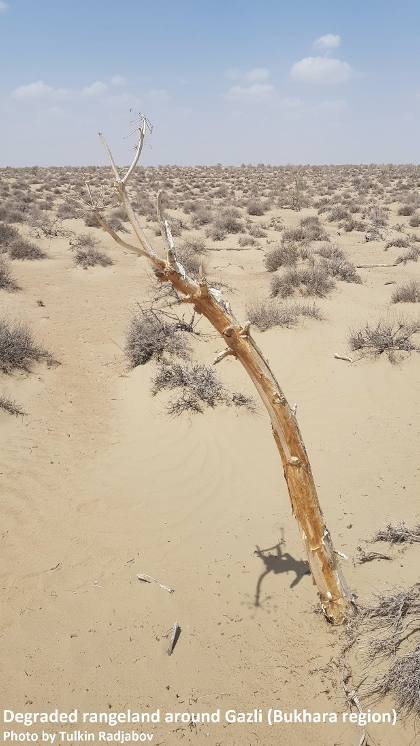
“Combined with the carbon credits the biodiversity credits mechanism can offer an effective win-win solution for socio-economic and environmental development”
by Tulkin Radjabov, National Coordinator of the UNDP BIOFIN Project in Uzbekistan
Tashkent, July 11, 2023.
The adoption of the Kunming-Montreal Global Biodiversity Framework (GBF), signed by 196 nations on December 19, 2022, aimed at "taking urgent action to halt and reverse biodiversity loss" and protecting 30 percent of land and sea area by 203$0, has become a significant milestone in ensuring the proper focus on the most crucial aspect of any development action: financing. The governments that signed the agreement have committed to making progress towards meeting targets and updating their National Biodiversity Strategy and Action Plans (NBSAPs), accompanied by biodiversity financing plans (BFPs). Among other aspects, BFPs will need to provide a clear set of actions and mechanisms to mobilize the necessary resources to address the estimated annual global biodiversity finance gap of over $700 billion. With a new international framework combined with the global trend of making ESG standards mandatory for businesses, global investments in biodiversity are expected to grow rapidly, particularly in the private sector. One such innovative financial mechanism being developed and promoted by international conservationist groups is biodiversity credits.
Biodiversity credit is a financial mechanism gaining popularity internationally. Unlike conventional financial loans, biodiversity credits represent an asset created through investments in the restoration, conservation, and development of biodiversity in a specific landscape. It can subsequently be marketed locally and globally to enterprises interested in purchasing such assets to fulfill their corporate ESG obligations. In other words, the value of the asset is determined by the measured and verified progress made in improving the overall well-being of an ecosystem and/or the quantity of target species in the predefined territory. While various approaches and methodologies exist for implementing this new financial instrument, essential requirements such as measurability, monitoring, verification, and certification of the process and results remain. This, in turn, will require a comprehensive approach from the government to create an enabling environment for the introduction of the new mechanism in the local market, including policy, legislation, and institutional changes.
Although there are unavoidable costs associated with introducing the mechanism, there are also significant potential benefits for the government and society. Creating the necessary conditions and implementing the new mechanism could make investments in biodiversity profitable, thereby generating genuine interest from the private sector. For instance, the introduction of the biodiversity credit mechanism could offer a solution to the persistent problem of rangeland degradation, the largest ecosystem in Uzbekistan. Biodiversity credits can help change the mindset of pasture users, shifting them from a purely consumerist attitude to an ecosystem approach in pasture use. This shift will ultimately have a positive impact on the overall environmental situation in the country and the region. Leveraging this mechanism will naturally require pasture users to reduce pressure on pastures by addressing main degradation drivers, such as overgrazing, and adopting sustainable pasture use practices and high-tech solutions like rotation plans, livestock monitoring, and afforestation in their daily operations. Furthermore, biodiversity credits can be combined with the carbon credit mechanism, as improved vegetation on the vast territories of over 20 million hectares of rangelands will significantly contribute to carbon sequestration. In fact, if properly implemented, these two mechanisms combined can provide a sustainable source of income for rural communities by creating new forms of businesses and jobs. They offer an effective win-win for socio-economic and environmental development. The feasibility study of introducing biodiversity credits in Uzbekistan, which includes an analysis of related legislative and institutional changes, along with economic justification, has been included in the activities of the UNDP BIOFIN Project* in Uzbekistan.

A recent meeting of representatives from the national ministries of ecology and economy/finance, organized by UNDP, discussed the prospects of introducing biodiversity credit in Uzbekistan. Mr. Josh Brann (USA), an international expert who visited Uzbekistan last month, shared information on the general principles and associated benefits that Uzbekistan could potentially derive from leveraging such a mechanism. In his presentation, the expert mentioned a range of specialized international forums that serve as knowledge platforms and can be helpful to national governments in their efforts to launch the mechanism locally. One of the most prominent international organizations in this area is the Biodiversity Credit Alliance (BCA). BCA's mission is to provide clarity and guidance for the formulation of a credible and scalable biodiversity credit market based on global biodiversity credit principles. Supported by international organizations, including UNDP, the BCA aims to mobilize financial flows towards biodiversity custodians while recognizing local knowledge and contexts.
Both biodiversity credit and carbon credit mechanisms are new concepts for the local market in Uzbekistan. According to Rahat Nurjanov, a specialist from the Green Economy Department of the Ministry of Finance and Economy, the proposed system has many similarities with the carbon credit scheme. Considering that the government has been studying the possibility of introducing carbon market mechanisms in Uzbekistan, introduction of the biodiversity credit mechanism could also be possible with the necessary methodological and advisory support from relevant international partners. Another participant in the meeting, Mr. Tura Kholikov, deputy head of the Biodiversity and Protected Areas Department of the Ministry of Ecology, Environmental Protection, and Climate Change, emphasized the potential positive impact that the mechanism may have on the development of eco-tourism, as well as further improvements in the protection of national protected areas (PAs) located near rangelands. Following the meeting, the participants agreed on the importance of continuing the dialogue and making the necessary efforts to further explore the possibility of introducing a biodiversity credit mechanism in Uzbekistan with the support of UNDP, particularly within its BIOFIN Project.
It is important to note that the introduction and successful implementation of any financial mechanism related to the environment, including biodiversity credit, cannot be carried out in isolation by one ministry or agency. It will require the coordinated efforts of various stakeholders, with the government's leadership playing a vital role in ensuring and facilitating this process. Given UNDP's many years of experience in supporting and implementing projects and initiatives in the field of biodiversity, it remains the most suitable international partner for the Government of Uzbekistan to further develop cooperation in this area.
The BIOFIN Project in Uzbekistan has been implemented since 2021 within the framework of the UNDP’s Biodiversity Finance Initiative (BIOFIN). BIOFIN was initiated more than ten years ago following the CBD COP 10 in response to the urgent global need to divert more finance from all possible sources towards global and national biodiversity goals. Now present in more than 40 countries and with the support of the European Commission, the Governments of Germany, Belgium, Canada, Norway, Switzerland, the United Kingdom, and Flanders, BIOFIN is working with governments, civil society, vulnerable communities, and the private sector to catalyze investments in nature.
Categories
Archives
- April 2024 (5)
- March 2024 (3)
- February 2024 (6)
- January 2024 (3)
- December 2023 (1)
- November 2023 (7)
- October 2023 (5)
- September 2023 (2)
- August 2023 (3)
- July 2023 (1)